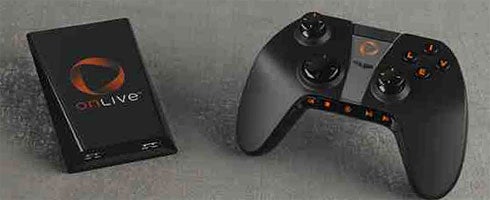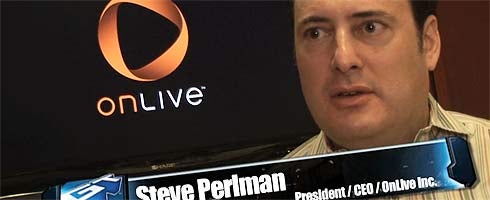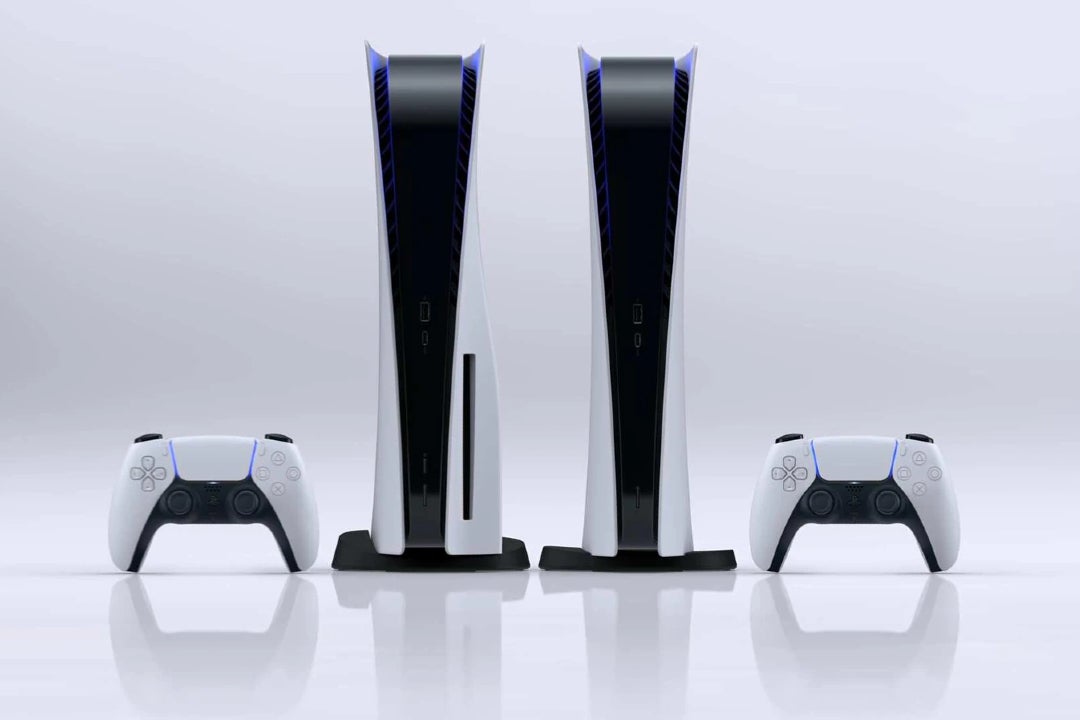Spinale, though, was extremely nice. He could tell I’d never interviewed anyone before, and knew how to set people at ease. Within seconds, it felt like a normal chat with someone you met down the pub. The sheer gulf of wealth disparity between us didn’t seem to matter. John was excited to tell me about OnLive, this strange new concept that was going to disrupt the gaming business, and I was excited to hear about it. It was, and is, a brilliant concept, and the basic pitch for OnLive pretty much applies to the Stadia platform which died a decade later: imagine never having to buy new hardware. That was the first thing that appealed to me, a potless call centre worker at the time, who saw the looming new generation of consoles as less of an exciting new future and more of a £400 tax on joy. The games run server-side, y’see, so you’ll never need to buy a new box. No more console generations. No more PC upgrades. Just pay for the games, and everything else is taken care of. And, hey, are you being thrown off the TV right in the middle of a sesh? Don’t sweat it, bro! Just log in on your tablet, or laptop, or whatever else you’ve got lying around, and carry on in another room. It sounded heavenly. Spinale demoed Dirt 3 on an OnLive micro-console sitting in front of us: an impossibly tiny black rectangle with HDMI, Ethernet, and an extremely well-designed wireless controller that is to this day one of the best pads I’ve ever held. The console itself looked like something left here by an advanced alien race, and the controller felt like it had been designed by people who extremely knew what they were doing. OnLive’s “gamer” credentials were legitimate, and they’d thought very hard about how to make their service appeal to the core market. And that micro-console? In possibly one of the only Steve Jobs “one more thing” moments that the Eurogamer Expo has ever had, everyone who attended that year got to take one home, for free. A premium bit of kit, weighty, made of metal, with a robust controller to match. Truth be told, it was actually a pain in the arse to get it back to Scotland, and plug it into the ADSL line I was sure it wouldn’t work on. Well, it did, and having been given a press account to demo the service, I spent a good three weeks rinsing it for every new release it had. Input lag was noticeably worse than running native, but certainly not to an unplayable degree. Visually it worked better after 6pm, where a break in local throttling would allow a crisp 720p stream of Warhammer 40,000: Space Marine to gush unimpeded into my West Lothian home. OnLive wasn’t snake oil, and the people behind it weren’t villains: it worked. And this was on 2011’s broadband infrastructure. It sported more than one innovation which we now take for granted across all platforms – a subscription service, for one, where a library of curated games was available for a small monthly fee. Just good business now. Back then? Absurd. Brag clips, where you could save the last fifteen seconds of gameplay and post them on your socials – a function neatly mapped to the premium-feeling controller – were an emergent feature of the service. “Your game is a video stream, so we leverage that every way we can”. When the feature showed up on PS4 a couple of years later, baked into the native hardware and poised to kick off a revolution in gaming’s social-marketability, I couldn’t help but wonder if OnLive itself had convinced Sony of the benefits. Spinale was excited. Passionate about the product. And not in a rehearsed or cynical way either: I remember him being more than willing to go off script, we joked about people drawing nobs on the whiteboard in Duke Nukem Forever, that sort of thing. And, as a former producer at Activision, he knew games: he understood the importance of input latency, and deliberately chose games which felt snappy and responsive to demo. Competitive shooters. Rally games that need constant micro-adjustment on brakes and steering, and so on. Within a month, he was no longer at OnLive. Within a year, nobody was. This, of course, was all dredged up in 2019 when the idea bubbled up again as a Google service by the name of Stadia, but often from proponents of the concept by way of insisting that things were different now. The basic argument goes something like this: OnLive was a great idea, but it launched at a time when not everyone had access to the required broadband infrastructure, and they were charging the same per game as disc-based systems were, which is obviously insane. All of which is absolutely true… of both OnLive and Stadia. In fact, it’s pretty remarkable how little Stadia seems to have learned from the mistakes of its forebear: almost as if the geniuses at Google didn’t bother to type “OnLive” into their own search engine and swot up on the wealth of material that charts its infamous demise. Everything has a parallel. Even the beautiful controller that everyone agrees is, hey, pretty good. Here’s the thing: OnLive worked perfectly well by the standards of the time, when the most popular native home console was chucking out 480p visuals over a SCART lead. In fact, in many instances, it would run games more smoothly than the 360 or PS3, where a framerate hovering between 19 and 30 was deemed perfectly acceptable by most in blockbuster titles like GTA IV. The tech was never the issue. The main difference between OnLive and Stadia were the market conditions they were launched into. Both platforms tried to sneak in just ahead of the next expected console generations, positioning themselves as affordable, play-anywhere alternatives to the stuffy old concept of big black boxes under your telly. But Stadia had an enormous, unprecedented advantage over both its predecessor and the Big Three: it launched right before a global pandemic would force everyone indoors and impoverish them, and at exactly the same time, global chip shortages would make the new Xboxes and Playstations an exclusive luxury that even those with the means could barely get a hold of. And yet, with every god in the pantheon smiling upon Stadia, with Moses himself practically logging in via Zoom to part the red sea in its favour, nobody gave a shit. By Google’s own admission, the punters simply weren’t arsed. Why? Well, take your pick. Regardless of how good the tech is – and it is good – it is inherently a worse option than running games natively on your own in-home hardware, in terms of picture quality, input lag, performance consistency, vulnerability to strong winds: you name it. And despite this, the pricing model did not reflect this fact. $60 for a disc vs $60 for a glorified rental is not an equation that works in cloud gaming’s favour, even in a world saturated with digital libraries and perfectly normalised to the idea of them. This was no less true in 2022 as it was in 2011. The math has not changed. Was getting access to Stadia cheaper and easier than obtaining a PS5? Immensely. Was it a better option than simply keeping your PS4? No, frankly. For most people making that call, their existing games and friend lists were part of the Playstation ecosystem and Stadia simply didn’t have an enticing enough offering to warrant making a lifestyle switch. The cost to develop games is no different for cloud services than it is for traditional consoles, and so the cost to the consumer for access to them cannot reasonably be expected to be different either. Which locked Stadia into the same absurd situation that OnLive was in, and that any cloud service positioning itself as a genuine competitor to consoles will find itself in: asking the same amount of money for an inherently, obviously, inescapably worse experience. You could argue that Stadia’s play-anywhere, platform agnostic credentials provide ballast, that the built-in convenience and vastly reduced entry cost – when a decent internet connection is close to hand – makes up for lapses in image quality, performance, input latency, and simply not feeling like you own any of the content you’re paying for. You could argue that; but it appears that the market doesn’t agree with you, and has told you that more than once now. Cloud gaming has a place in the mix, of course: as a round-the-houses way of emulating a PS3, as we’ve seen with PS Now and the new PS Plus (where a lot of OnLive’s technology and expertees ended up). As added value to Xbox Game Pass, where Microsoft’s xCloud feature is subsidised by the rest of the decidedly in-home-hardware based business, and basically grants all of Stadia’s assumed advantages to an ecosystem that doesn’t fall on its arse when your mum wants to watch Deadpool upstairs. As a way of running demanding games on underpowered handhelds like the Nintendo Switch which have the play anywhere aspect nailed, but sometimes need a little help to bring Resi 7 to the TV screen. But as an alternative to the humble console? As a disruption to the orthodoxy of running local code on local silicon? As a genuine thorn in the side of the Big Three? The question has now been asked in an extremely high-profile manner, with countless billions invested, of two significantly different markets across a gulf in time, and both of those markets checked over the goods and said the exact same thing: Nah.







